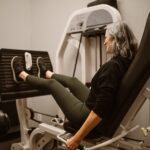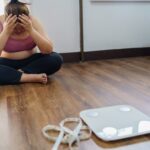Embarking on a fitness journey from the comfort of your own home is a convenient and accessible option, especially for those new to exercise or short on time.
Whether you’re a beginner looking to shed a few pounds, increase your strength, or simply improve your overall well-being, establishing a consistent workout routine at home can be incredibly beneficial.
Home workouts for beginners: Where to begin?
You’re not alone! Exercising at home can be daunting, but with the right guidance and determination, it’s entirely achievable.
Before diving headfirst into a rigorous workout routine, it’s essential to start with a plan tailored to your fitness level and goals.
- Assess your fitness level: Before starting any exercise program, take a moment to assess your current fitness level. Consider factors such as your strength, flexibility, and cardiovascular endurance. This self-assessment will help you determine where to begin and track your progress along the way.
- Set realistic goals: Establishing realistic and achievable goals is crucial for staying motivated. Whether you aim to lose weight, build muscle, or simply improve your overall fitness, setting specific, measurable, and time-bound goals will help you stay focused and track your progress.
- Choose the right equipment: One of the advantages of home workouts is that they often require minimal equipment. For beginners, basic items such as a yoga mat, resistance bands, dumbbells, and a stability ball can be sufficient for a variety of exercises. However, many effective home workouts can be done with just your body weight.
- Start slowly: It’s tempting to dive into intense exercise at home right away, but for beginners, it’s important to start slowly to prevent injury and avoid burnout. Begin with shorter sessions and gradually increase the duration and intensity of your workouts as your fitness level improves.
Best home workout routine for beginners
Warm-Up
Before starting any workout at home, it’s essential to warm up your muscles to prevent injury and prepare your body for exercise. A simple warm-up routine can include dynamic stretches, such as arm circles, leg swings, and jogging in place, for 5-10 minutes.
Strength training
Incorporating strength training into your beginner home workout program is crucial for building muscle, increasing metabolism, and improving overall strength and endurance. Bodyweight exercises such as squats, lunges, push-ups, and planks are excellent options for beginners. Aim for 2-3 sets of 10-15 repetitions of each exercise, gradually increasing the intensity as you progress.
Cardiovascular exercise
Cardiovascular exercise is essential for improving heart health, burning calories, and boosting mood. Beginner-friendly cardio options include brisk walking, jogging in place, jumping jacks, or dancing to your favorite music for 20-30 minutes, 3-5 times per week.
Flexibility and mobility
Don’t forget to incorporate flexibility and mobility exercises into your home routine to improve range of motion, prevent injury, and promote relaxation. Yoga, Pilates, and stretching exercises are excellent choices for improving flexibility and reducing muscle tension.
Cool down
After completing your workout at home, take 5-10 minutes to cool down and stretch your muscles to improve flexibility and reduce muscle soreness. Focus on static stretches targeting major muscle groups such as hamstrings, quadriceps, calves, chest, and shoulders.
Weekly home exercise routine for beginners
You don’t need fancy equipment to get fit! Utilize common household items like chairs, walls, and water bottles. For added resistance, consider investing in inexpensive dumbbells, resistance bands, or a yoga mat.
Remember, your body weight is your most powerful tool!
Day 1: Strength training

- Warm-Up: 5-10 minutes of dynamic stretches (arm circles, leg swings, etc.).
- Bodyweight Squats: 3 sets of 10 repetitions.
- Push-Ups (Modified or Knee Push-Ups): 3 sets of 8-10 repetitions.
- Dumbbell Rows (Using Water Bottles or Resistance Bands): 3 sets of 10 repetitions per arm.
- Plank: Hold for 30 seconds to 1 minute.
- Cool Down: 5-10 minutes of static stretches targeting major muscle groups.
Day 2: Cardiovascular exercise

- Warm-Up: 5-10 minutes of light jogging or jumping jacks.
- Brisk walking or jogging in place: 20-30 minutes.
- Jumping jacks: 3 sets of 20 repetitions.
- High knees: 3 sets of 20 repetitions.
- Cool down: 5-10 minutes of walking followed by static stretches.
Day 3: Rest or active recovery
Take a day off from structured exercise or engage in light activities such as walking, stretching, or yoga to promote recovery and flexibility.
Day 4: Strength training

- Warm-Up: 5-10 minutes of dynamic stretches.
- Lunges (forward or reverse lunges): 3 sets of 10 repetitions per leg.
- Dumbbell chest press (using water bottles or resistance bands): 3 sets of 10 repetitions.
- Bodyweight glute bridges: 3 sets of 12 repetitions.
- Side plank (each side): Hold for 20-30 seconds.
- Cool down: 5-10 minutes of static stretches targeting major muscle groups.
Day 5: Cardiovascular exercise
- Warm-Up: 5-10 minutes of light jogging or marching in place.
- Dancing to music (your choice): 20-30 minutes.
- Mountain climbers: 3 sets of 15 repetitions.
- Bicycle crunches: 3 sets of 15 repetitions per side.
- Cool down: 5-10 minutes of walking followed by static stretches.
Day 6: Flexibility and mobility
- Warm-Up: 5-10 minutes of gentle movements (arm swings, leg swings, etc.).
- Yoga or Pilates session: Follow a beginner-friendly yoga or Pilates video focusing on flexibility and mobility.
- Static stretching: Spend 15-20 minutes stretching major muscle groups, holding each stretch for 20-30 seconds.
- Cool down: 5-10 minutes of deep breathing and relaxation.
Day 7: Rest and Recovery
Take a well-deserved rest day to allow your muscles to recover and recharge. Listen to your body and engage in light activities if desired, such as walking or gentle stretching.
Remember to stay hydrated throughout the week and listen to your body. If any exercise at home feels too challenging or causes discomfort, modify it to suit your fitness level or consult with a fitness professional.
Consistency is key
Consistency is the key to success when it comes to home workouts for beginners. Make exercise a priority by scheduling regular workout sessions into your weekly routine and sticking to them as much as possible. Remember, progress takes time, so be patient with yourself and celebrate each milestone along the way.
In conclusion, starting a home workout routine as a beginner is a fantastic way to improve your health and fitness without the need for expensive gym memberships or fancy equipment. By following a structured workout plan, setting realistic goals, and staying consistent, you’ll be well on your way to achieving your fitness aspirations from the comfort of your own home.
So, lace up your sneakers, grab your water bottle, and get ready to embark on an exciting journey to a healthier, happier you!
FAQ – Exercise at home for beginners
How long should a beginner workout at home?
For beginners working out at home, the duration of each workout session typically ranges from 20 to 30 minutes, gradually increasing as their fitness level improves.
This timeframe allows beginners to engage in a variety of exercises targeting different muscle groups while maintaining focus and intensity. It’s essential for beginners to prioritize quality over quantity, ensuring proper form and technique throughout their workouts to prevent injury and promote long-term progress.
As they become more accustomed to their routine and build endurance, they can gradually extend the duration of their workouts to 45 minutes to an hour, as long as they listen to their body’s cues and avoid overexertion.
How many days should a beginner workout at home?
For beginners working out at home, aiming for a minimum of three to four days of exercise per week is a reasonable starting point.
This frequency allows beginners to establish a consistent routine while providing enough time for rest and recovery between sessions.
As they become more comfortable with their routine and their fitness level improves, they can gradually increase the number of home workout days per week to five or even six, with adequate rest days interspersed to prevent burnout and promote muscle recovery.



Pingback: A Beginner's Guide to Fat Loss: Crafting Your Workout Plan